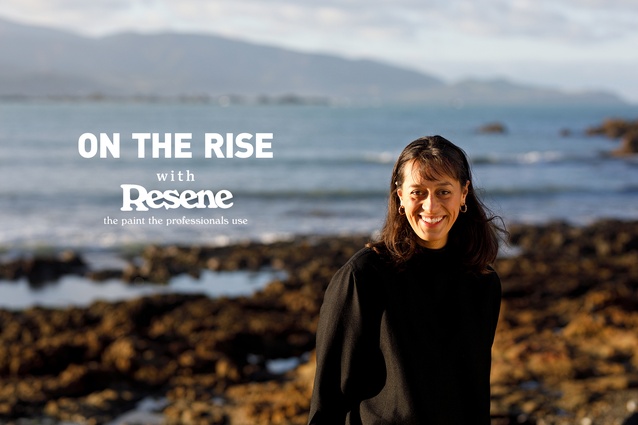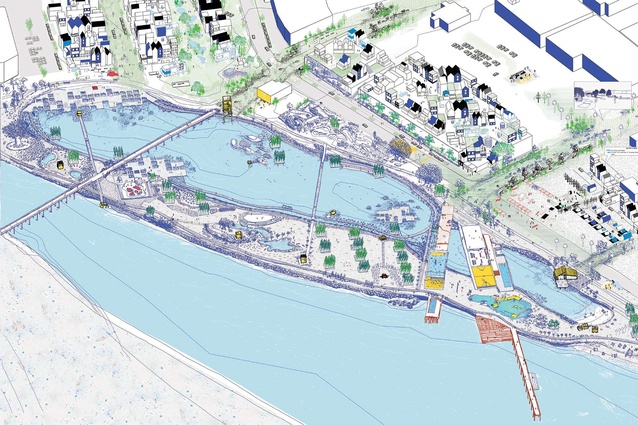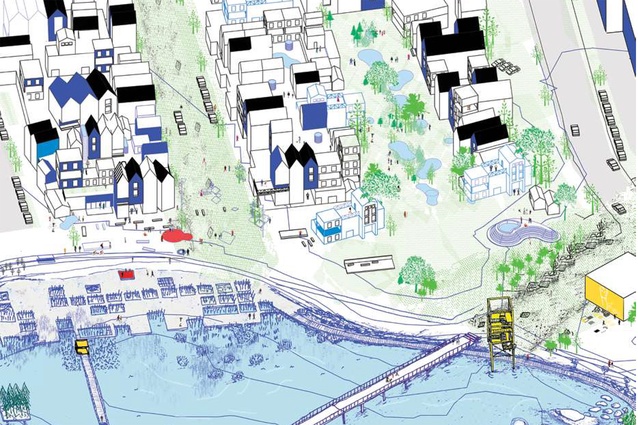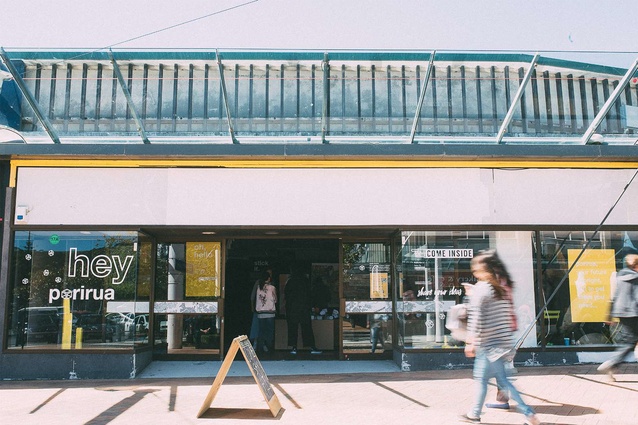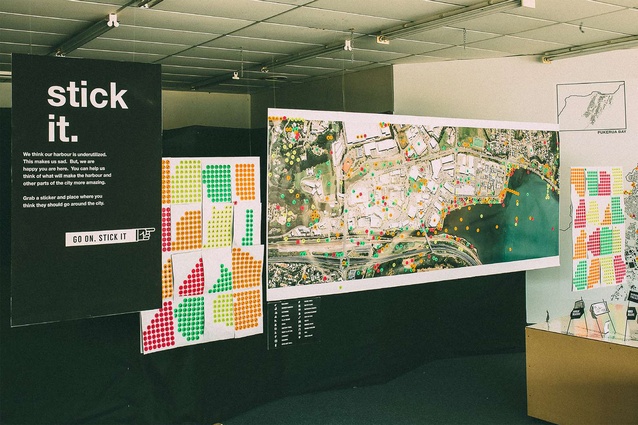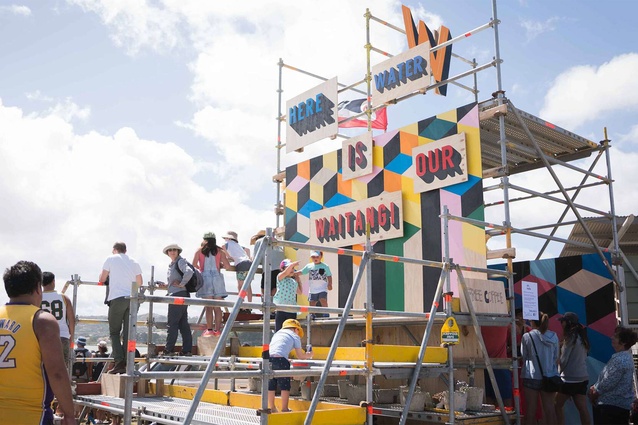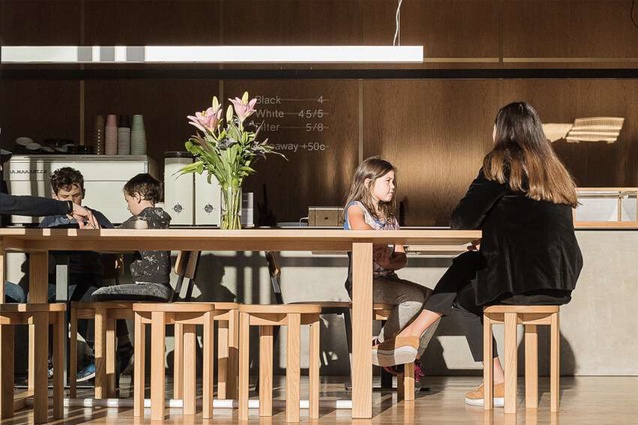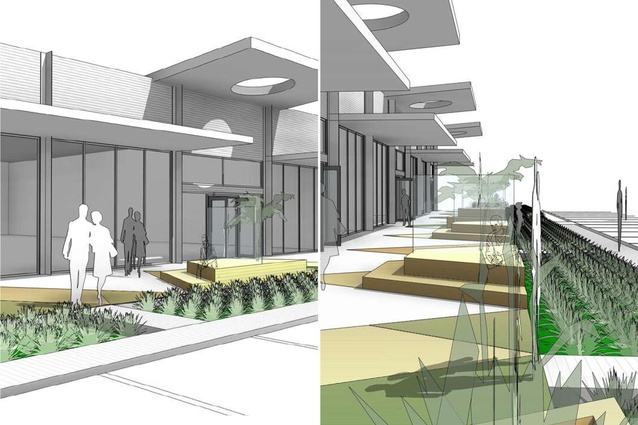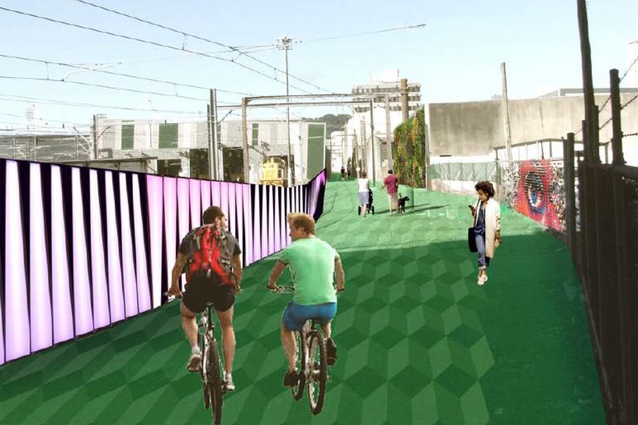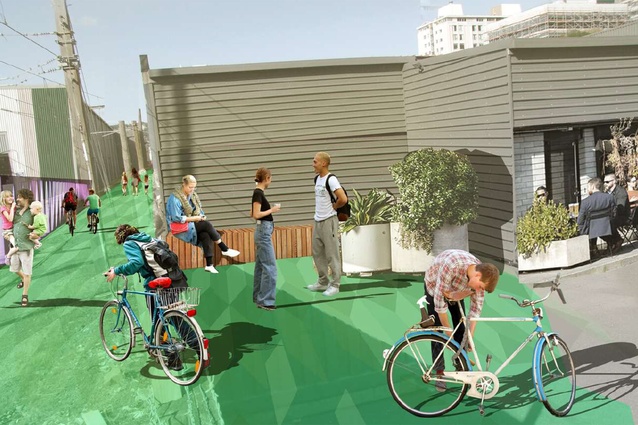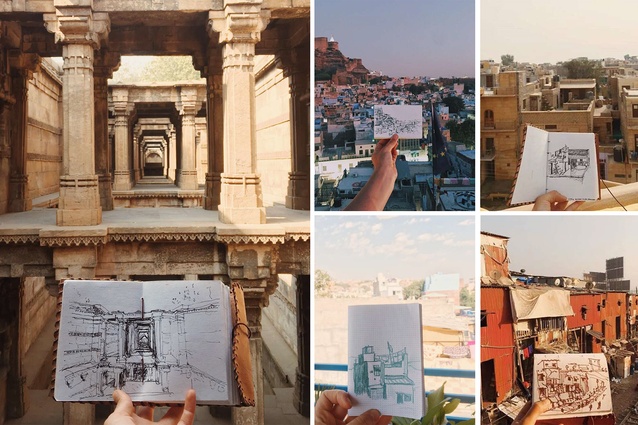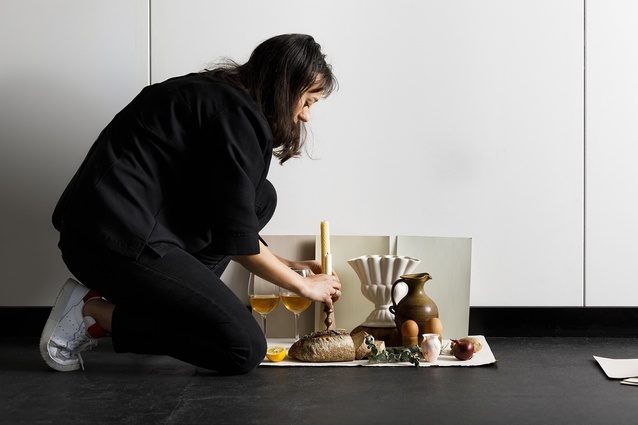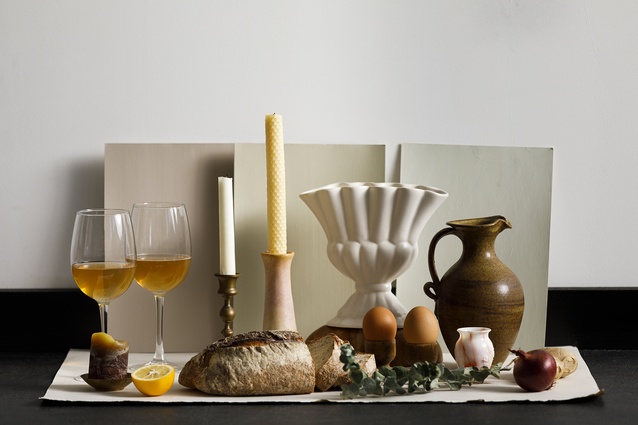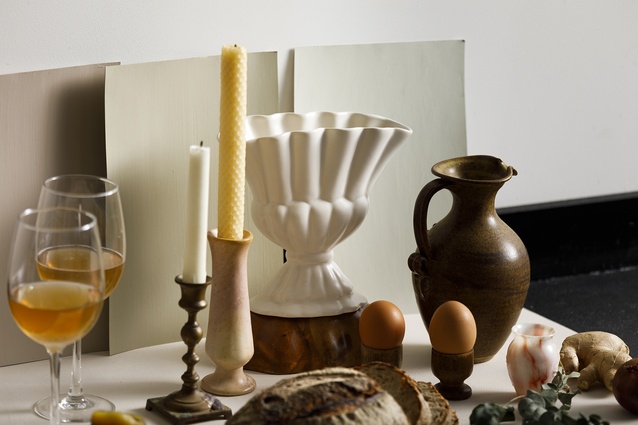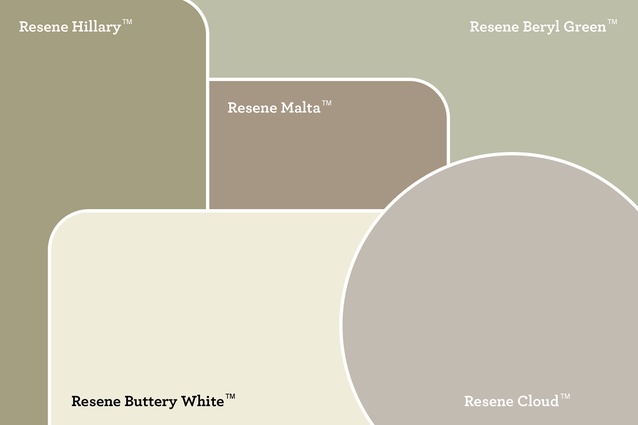On the Rise: Elyjana Roach
ArchitectureNow’s On the Rise series with Resene profiles young designers who are making waves in the industry. This month, Ashley Cusick caught up with Elyjana Roach who, along with her professional work at Etch Architecture in Wellington and undertaking a Masters of Architecture and Urban Design at Harvard later this year, is fighting to make her hometown of Porirua a better place for its inhabitants.
Ashley Cusick (AC): You’re half Samoan and half Australian, but you grew up here in New Zealand, right?
Elyjana Roach (ER): My dad is from Tasmania, but he was born in Papua New Guinea and his parents were missionaries there and helped build a community from scratch basically. They built an airstrip by hand with the locals, and then built a timber mill, a school, a hospital and some houses as well. My mum was born in Samoa and she moved here when she was fourteen, to Invercargill of all places. And I grew up in Porirua.
AC: When did you first become interested in architecture? When did you decide to pursue it as a career?
ER: I always have remembered that I wanted to do architecture, which sounds really geeky. I was homeschooled for a bit and then I went to school and then my last year of primary, year eight, I have very vivid memories of telling my teacher I wanted to be an architect even though I had no idea what that meant.
I would be in the backyard with my brother with lots of timber lying around, and building our own makeshift treehouses. One of the buildings that I did not realise at the time but looking back I see how it influenced my desire to study architecture, was a building in Porirua that we would go to every weekend. My dad would take my brother and me to the pools and then he would take us to the library, which was called Pātaka. It is a gallery and a library and a cafe and a community art space, and there are rooms you can hire. It was designed by Stuart Gardyne. I remember being there imagining that it would be a cool space for this or that. That building really influenced me, I think.
AC: How did your initial vision of architecture as a kid evolve throughout your studies, and how did you hone in on what you wanted to focus on in your career?
ER: A lot of it came from my final year of architecture. I had always been connected to my community where I grew up in Porirua, but I never really knew how to give something back to the people I grew up with. I knew architecture had the ability to involve people in its process but didn’t quite understand how that could happen in reality. I am still learning what that is, because it is so big and there are so many different parts of it that I enjoy. I am trying to not close any doors, to not be limited to one part.
AC: Can you tell us more about your final year project and how it shaped what you would go on to pursue in practice?
ER: My last year was really purpose-driven. It wasn’t just a project that I did for my final year. I felt like it was a lot bigger than just me and not only my story to have. My thesis felt more like being a facilitator to telling the story, or re-emphasising the story, of Porirua. It is really unique. The landscape has a lot to do with it. It is built around two harbours, but no one is really connected to that landscape. I explored how that relates to this disenfranchisement that happened with Takapūwāhia Marae of Ngāti Toarangatira that was on the water’s edge.
So, the project was identifying that the way the city had been built neglected the harbour. Then, one part of it was reorienting the city back to the harbour and the other was discovering how you can include the people of the city to be part of the process, or at least think about those things. The government can only do so much. It has to come from the people that actually live there and have businesses there. Plus, I felt like growing up in Porirua really taught me how to relate to a lot of different people. I grew up mainly in a Pasifika background. When I left homeschooling when I was 12, I went to a Pālagi school and had the biggest culture shock, but it was great. Going to church also taught me how to relate to people that were a lot older than you and a lot younger than you. Trying to bring that into my architecture process and projects was important for me.
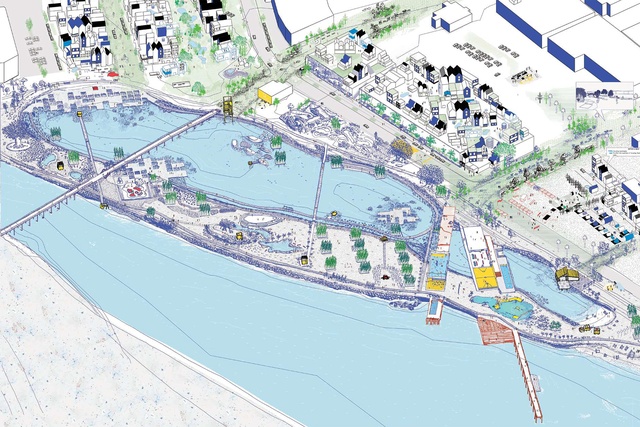
AC: Are you still actively working on projects in Porirua related to your thesis?
ER: I was intentional about doing that thesis project because I wanted it to be a real thing. I know those types of projects take a long time, so I have been working with the council in different areas, like the thirty-year strategic growth plan, their review of the district plan, getting youth voices into those spaces and providing architectural advice and guidance. And then, I’ve also been able to meet with private developers through that process as well. I was asked to talk at a summit in Porirua, which invited a whole lot of business owners and developers to talk about the future of Porirua. The guy who presented before me owns a few of the buildings around the harbour, and he gave all these principles that were holistic in terms of environmental, social, cultural, economical background, which was a great set up for my presentation. It matched my principles, and then I just came in and presented the solution. It was a very provocative solution, and I understand that there are barriers to it, but it was meant to provoke people. I continue to work with that developer even now because for him, as a business developer and building owner, having things you can do, or test out, without having to commit to a lot of money or a lot of building is important. I did a toolkit for him that came with a number of different architectural ideas which you could deploy over time. Things that could happen tomorrow, or next week, or in a month’s time, to things that could take a number of years – like an actual building project. He is the coolest guy, and he is from Porirua too.
AC: Since you’ve started working after graduation have your design principles or practices changed? Have you learned anything from working in the “real world” as opposed to a more theoretical one?
ER: My thesis included a lot of theoretical participatory design, which was about giving people the opportunity to know what was happening. If they wanted to comment then they could. We are working on a community project at the moment, and in the process of including communities, it can get blurry to determine where the boundary is for letting people have their say. But, I do think that part of the role of designers and architects is being able to see people and understand what they need and what can be accommodated for the future.

AC: Plus, architects and designers have expertise that others may not have. You are obviously really engaged with the community you grew up in and really passionate about making it a better place. What, do you think, drives that?
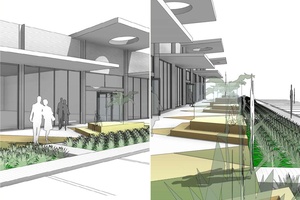
ER: I have had a lot of people invest in me, and it was part of my upbringing that even when I make decisions for myself, I am always connected to a bigger whole, whether I like it or not. It was sometimes really hard but sometimes really great. It is ingrained in me that what I am doing is not just for my sake. I am still trying to learn what the best ways are to serve my communities. The biggest lesson for me growing up in a Pasifika background was that, number one, you are taught how to serve. I cannot remember how many lunches and dinners where us young ones would be in the kitchen making all the coffees and the teas, serving the elders, or cleaning the church. Doing those small things are actually so important for the big things. If you don’t serve in the small things, how will you face all the big things? Service and also honour are the two biggest things that you carry from your culture. In terms of architecture, being true to myself is a way to serve other people and honouring the people that I work with by being committed and doing things in an excellent way. Sometimes you try and make it all about the big moves, but it is all about the small moves for me.
AC: For most architects, I think, doing good is part of their desire to become an architect, but you are putting in effort above and beyond your work in “traditional” practice, for lack of a better word.
ER: The boundaries between work and life are very much not there, but I love it. I think the practice that I am in has been a huge part of that. I didn’t know what I was getting into when I started working there; they didn’t know what they were getting into by hiring me. But, they are all about enabling people to bring in what they are passionate about, and so, because my home and town and city are important to me, it was never a question about whether I needed to separate my work. It all just became one and the same.
AC: What kind of work have you been doing while you’ve been working with Etch Architecture in Lyall Bay?
ER: I’m working all across the sectors. I’ve been doing some residential projects in Wellington, mainly renovations, additions and alterations, which is cool because they are everyday people, so they aren’t trying to have the flashiest house but they can still have really well-designed spaces. Actually, our vision is to create beautiful, functional architecture for everyday people, which I love. We are also doing a number of different commercial bits here and there. I worked on Luke’s Lane café for People’s Coffee and Hiakai restaurant for Monique Fiso. We did a project in Naenae which was called the Trade School Kitchen, which is like a cafe but also transitional space for women that are in Arohata Prison. They get trained in barista skills so when they come out of prison they have a place to work before finding other work.
AC: It can often take time to find your voice in your work, but you seem to have quite a clear vision about what you want for the future of your community. And, not only that, you are taking practical steps towards that vision.
ER: My family ground me in that vision and my upbringing. I grew up in church, working in a lot of teams. I have had so many amazing people that have invested in my life and been amazing leaders, so I have been able to see what good leadership is like. And, I could also see what bad leadership is like. The biggest thing that I have learnt from my parents and other people is to value people if you are part of a team. A lot of what we do is voluntary at church, so you are always thinking of how you can make somebody feel appreciated for being a part of the bigger team. It is never just you, it is everybody else and you that makes it happen.
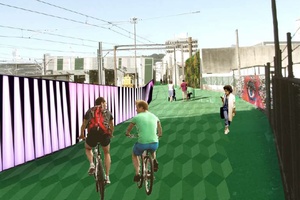
In architecture, it is really interesting because you have the traditional practices that are named after one person and then you have others that have a non-personal name. I still think there is honour in remembering the work of one person, but this is where service and honour go together. There is something that you learn when you honour who you are learning under; you get what they have.
AC: If you are imagining a better future for communities through architecture, what are your ideal outcomes?
ER: I think, fundamentally, architecture is about wellbeing. I am thinking about people who are still living in Porirua in houses that make them sick. I facilitated a youth panel for the district plan where our main topic was looking at housing – some of them had come from these communities where they cannot even get to thinking about the future because their present isn’t working. I’m not sure that architecture has done a very good job of relating itself to health.
AC: You’re inherently connected to Porirua because it is your home. Do you think there has become a disconnect between architects and the land on which they design?
ER: I do think it is about understanding place, people, and architecture in that order. We often do it the other way round. For example, there is an HLC and Kāinga Ora project happening in Porirua at the moment, where 1.5 billion dollars have been dedicated to Eastern Porirua including the renovation of 2,000 state homes, some of that are new homes and redoing old homes. It is not supposed to be a housing project, it is supposed to be a holistic project: new homes, new jobs, new public spaces, walkways, schools. But, it is not as easy as saying we need this type of room to accommodate a big family. It is about taking time to create relationships with people, and sometimes the budget and the process doesn’t allow for that, which is hard.
AC: Of course, there are commercial realities that we have to live within.
ER: Beyond all of that though, even just showing other people in my community that may not have been exposed to architecture, or even thought about architecture, or engineering, or sciences as a career path is worthwhile. It is amazing what seeing one person from your community doing that can actually do for you. You think, ”I can do that too.”

AC: And, the more people that we can empower to take on these kinds of roles from all different communities, surely the better outcomes we will have for everyone going forward. So, where are you headed next?
ER: I’ll be starting a Masters of Architecture and Urban Design at Harvard later in the year on a Fulbright Scholarship, online to begin with. It is kind of surreal because in New Zealand we don’t really understand what that means. I don’t think I really understand what that means. I got accepted into a few other schools, but I decided on this one partially because it had a more structured approach to understanding urban design, which I needed. I decided I wanted to do urban design when I was thinking about my project in Porirua and about how I could bring more value to who I was working with, or any other client. I felt like I needed to commit to studying, which is very daunting. The first semester is starting online in September, which I am excited about because it means I still get to work on some projects here.
It will be fascinating. I am really curious to see what the experience is like and to make the most of the opportunity. We are going to bring Harvard to Porirua, which has never been done before and that is the part I am excited about.
AC: Lastly, let’s talk about the mood board you created using Resene products. What have you created and what inspired your colour choice?
ER: The colours I’ve chosen are inspired by the rituals that happen within the everydayness of a home. Most Gib walls in houses these days are painted in a selected white, or perhaps in a light coloured tone if one is so daring. These neutral colours mean the walls take the backseat and show light on the objects within the home itself. The subtlety of colour makes way for art to be expressed, photographs to be shared, furniture to be organised, objects to take dominion and inhabitants to occupy. I feel architecture can and should, where necessary, compliment and provide space for enjoying landscape and for enjoying the rituals that are fundamental to inhabiting a home, things like having a meal.
For many of us that were privileged to be in a safe space during lockdown, the everydayness of home was comforting. Deciding what baked goods were going to be made or which walks in the neighbourhood had yet to be done: these acts of being at home are what architecture can make way for. Even so, once lockdown was finished, I think everyone was so much more appreciative of gathering in communal spaces, to break bread and enjoy the company that comes in sharing a meal. I’ve used the white tone as a base to contrast with the objects, and the neutral earthy tones to compliment the hues in the objects.
Read more from the On the Rise series here.

